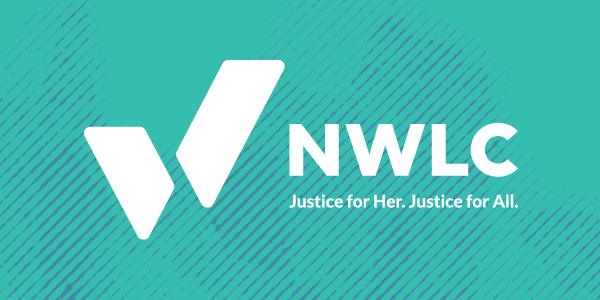Abortion rights, women of color, and LGBTQIA+ people are under attack. Pledge to join us in fighting for gender justice.
Reclaiming Our Power: Tools for Taking Action on Abortion Access and Economic Justice

This is the third installment in a three-part series with Equity Forward where we explore the policy issues at the intersection of abortion access and economic justice, and how we can advance these fights. You can view the other two pieces here and here. We thank Equity Forward for their close collaboration and partnership.
The barrage of state and federal attacks on abortion is leaving many of us feeling stunned, overwhelmed, and, frankly, powerless. And we know that restrictions on abortion access often lead to economic hardship, too. But the truth is, we do have power. We have always taken care of each other, especially in the face of injustice. Now we need to do what we can to care for ourselves and our communities in the present while building towards a better future. All of us—from community members and organizations to researchers and journalists—can join the fight for abortion access and economic justice. We hope the list below serves as a starter kit for some ideas, including how to learn more about the issues that affect us all, talking to your loved ones about what you learn, and supporting your families and communities.
Educate Yourself and Your Community
There are many examples of how abortion is an economic justice issue—from studies showing clear links between access to abortion and economic independence for women,1 to the unnecessarily high costs of accessing abortion care due to deliberately constructed barriers. The bottom line is people have more control over their economic security when they can make decisions about what’s best for their bodies and their families. Educating ourselves and our communities about how these issues and our movements are connected can strengthen our ability to fight back collectively.
Anti-abortion centers (AACs), often referred to as crisis pregnancy centers (CPCs), are one of the issues everyone needs to know about. AACs are unregulated entities often affiliated with large, national anti-abortion organizations that exist primarily to coerce, shame, and scare people out of seeking abortion care. They often pose as a clinic or mobile vehicle purporting to provide care and support for pregnant people, yet they do not follow established standards of sexual and reproductive care. Instead of supporting the real-life economic needs of women, children, and families, anti-abortion lawmakers have allocated over $1.13 billion in public funds to support anti-abortion centers and “Alternatives to Abortion” programs that shame and deceive people seeking abortion care.
It’s important to learn about the AACs in your community, whether your state lawmakers are funding them or fighting them, and how to effectively raise awareness.
To learn more about AACs, where they are, and how to stop them, see the resources below:
- Map of brick-and-mortar AACs in the United States—Crisis Pregnancy Center Map
- Overview of AACs and public funding—Equity Forward
- Tracker for AAC revenue, expenses, and assets—Reproductive Health and Freedom Watch
- Analysis of federal funding of AACs—Health Management Associates
- Study on the AAC industry in nine states—The Alliance
Speak About Abortion Using Values
It’s not enough to just talk about abortion, we have to talk about why we support it—and ultimately, that comes down to talking about our values. When we talk about our baseline values, we can connect and relate to more people. Deeply held core values like freedom, autonomy, justice, rights, and health and well-being strengthen our voices and our impact. Here are some examples of values-based messages about abortion:
- Everyone deserves to make the best decision for themselves and their families.
- We are not truly free if we cannot control our bodies and our futures.
We can also talk about the relationship between abortion access and economic justice in a way that connects them to other issues people care about. Here is an example of a values-based message connecting abortion to other important issues in our communities:
- Having the freedom to decide if and when we have kids and how to care for our loved ones is fundamental to living the lives we choose. This includes policies that protect abortion care and expand paid family leave, affordable child care, and aging and disability care.
For more information, check out these resources:
- Abortion Values Messaging Guide—National Women’s Law Center
- Abortion Rights are Inextricably Tied to Social and Economic Justice Movements—National Women’s Law Center
- Abortion Unites Us: Abortion Messaging for Union Members and Leaders—National Women’s Law Center
Advocate for Change
The political education and narrative change strategies described above create the conditions we need for our advocacy efforts to succeed. This advocacy can look like fighting to end public funding of anti-abortion centers and invest in abortion care. It could also look like working to end Medicaid abortion bans and ensuring that all people have access to abortion care, regardless of their insurance coverage. Regardless of what you do, remember that you have power, even when the lawmakers representing you make it feel like you don’t.
While we advocate for change, it is critical to remember that people need abortion care now, not later. We must couple our policy and advocacy strategies with deep investment in abortion funds and practical support organizations. Abortion funds help people pay for their abortion care, while practical support groups help abortion seekers with travel and logistical support (oftentimes, abortion funds also offer practical and logistical support, like travel, lodging, and child care). These organizations exist at the intersection of abortion access and economic justice, and they bring us closer to a future where all people have access to abortion without shame or stigma.
How to find your closest abortion fund and practical support organization:
- Find an Abortion Fund—National Network of Abortion Funds
- Find Your Local Practical Support Organization—Apiary for Practical Support
¹We use “women” in reference to the studied populations in the cited research; however, we recognize that abortion access impacts all people who may become pregnant, including cisgender women, transgender men, and non-binary people.






